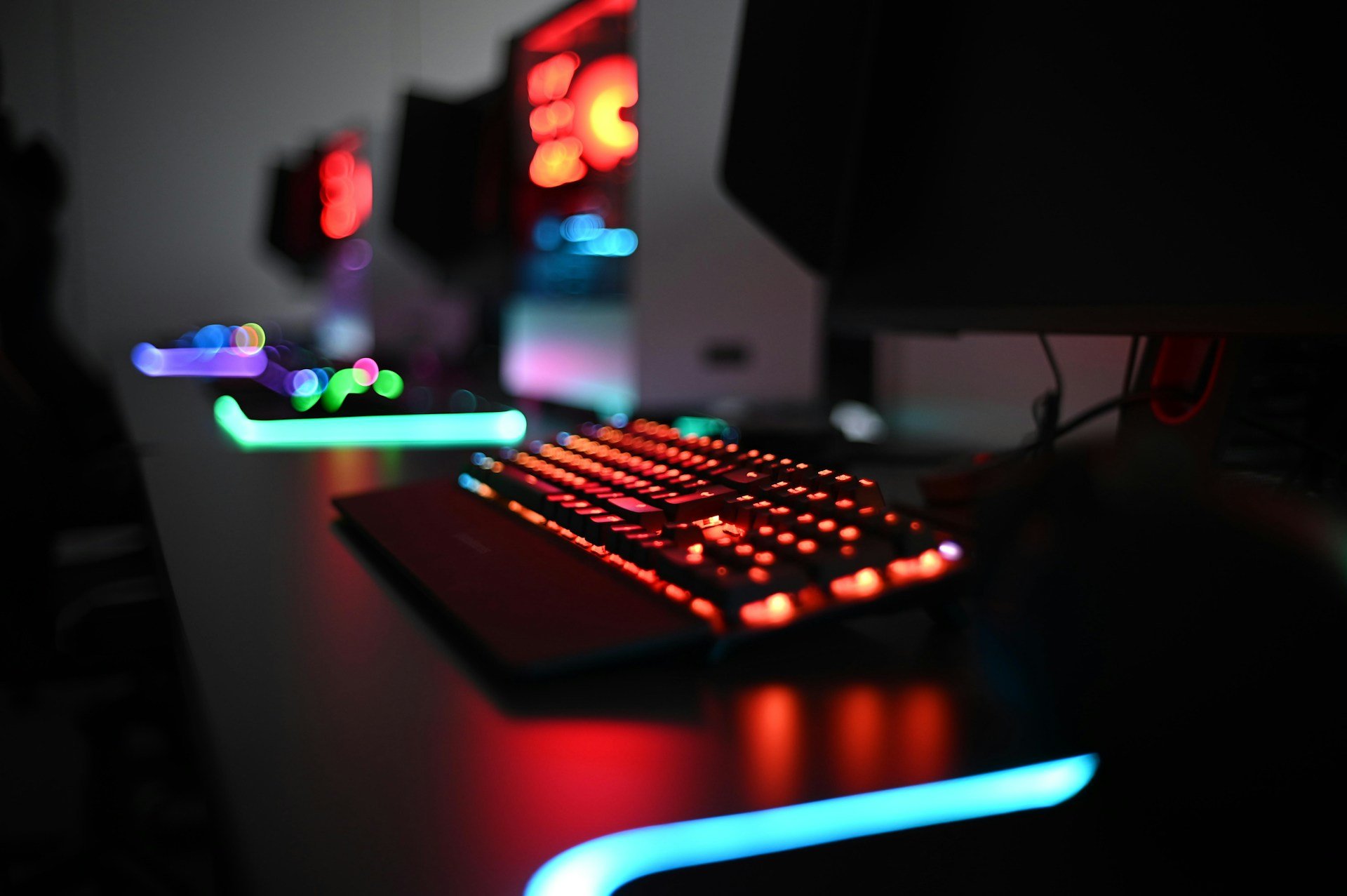Disclosure Sponsored Links: This post contains a paid-for sponsored link, meaning we have received compensation in exchange for including it. Sponsorship does not influence our content, but we believe in transparency regarding paid placements.
Counter-Strike: Global Offensive (CS:GO) has been one of the most iconic games in the world of esports since its release in 2012. With its tactical gameplay and community-driven economy, CS:GO has gained a global following. However, while most players and fans focus on the mechanics, strategies, and competitive aspects, there is another side to the game that deserves recognition—the art and design of CS:GO. This article will delve into the aesthetics and design choices that define CS:GO, while exploring elements like Reck settings, which contribute to gameplay experience and visual customisation.
Table of Contents
The Visual Language of CS:GO
At first glance, CS:GO might seem like a straightforward first-person shooter, but its visual design holds a deep complexity. The game’s environments are intricately crafted, blending realism with clear, tactical readability. Each map in CS:GO is an artwork in its own right, carefully designed to balance beauty and function. The layout of these maps is carefully curated, guiding players with visual cues while providing strategic depth.
Take iconic maps like Dust II or Mirage, for example. Each of these maps is packed with detail, from the weathered surfaces of buildings to the debris scattered on the streets. The textures and lighting create an immersive atmosphere that is both believable and engaging. Beyond the superficial design, however, lies the essence of the maps: clarity. Visibility is key in competitive play, and the designers of CS:GO ensured that the maps are visually distinct, allowing players to quickly differentiate between different areas and react accordingly.
In addition to map design, character models in CS:GO are a blend of realism and simplicity. The Terrorists and Counter-Terrorists each have unique models that are detailed enough to feel immersive, but not so busy that they disrupt gameplay. Reck settings, often used by professional players, can further enhance the visual experience by optimising the game’s graphics and performance, allowing players to maintain clarity and precision during intense matches.
Skins: A Marriage of Art and Economy
One of the most unique aspects of CS:GO’s design lies in its weapon skins. Skins are custom textures that players can apply to their weapons, adding a layer of personalisation to the game. Unlike many other games, where visual customisation might simply be cosmetic, skins in CS:GO have real-world value. This intersection between art and economy has transformed CS:GO skins into digital collectibles that hold significant monetary worth.
Some skins, like the Dragon Lore or the AWP Medusa, have become legendary within the CS:GO community. The design of these skins is more than just aesthetic—it’s a way for players to express themselves, showcase their taste, and even demonstrate their status within the game. The intricate patterns, color schemes, and themes of the skins are the result of collaborations between designers, artists, and the community itself.
CS:GO’s skin economy is also a reflection of the game’s larger design philosophy. The developers have empowered players to create and submit their own skin designs, which can then be voted on and potentially added to the game. This collaborative process allows the community to directly influence the game’s visual design, adding a layer of diversity and creativity that keeps CS:GO fresh and exciting.
It’s no surprise that Reck settings play a role in enhancing how players experience these skins. High-quality graphics settings can make skins appear more vibrant and detailed, elevating the visual satisfaction of using a rare or expensive skin. As such, many players tweak their Reck settings to strike a balance between performance and visual fidelity, ensuring that they can appreciate the art of their weapon skins while maintaining peak gameplay performance.
Sound Design: The Invisible Art
While CS:GO is primarily known for its visuals, the game’s sound design is equally important to its overall experience. Sound cues in CS:GO are crucial for gameplay, as players rely on audio to detect enemy positions, understand the environment, and make strategic decisions. Every gunshot, footstep, and explosion is meticulously designed to provide players with information, making sound a fundamental aspect of the game’s design.
The art of sound design in CS:GO lies in its subtlety. Sounds are crafted to be realistic and immersive, but they are also deliberately balanced so as not to overwhelm the player. The sound of footsteps, for instance, varies depending on the surface the player is walking on, providing valuable information about the location and movement of enemies.
Just like visuals, Reck settings can influence the audio experience in CS:GO. Players often adjust their audio settings to prioritise certain sounds, ensuring they can hear crucial cues like footsteps or bomb plants while filtering out background noise. In this way, Reck settings become a tool for players to optimise both the visual and auditory aspects of the game, enhancing their overall performance and experience.
The Impact of Reck Settings on Performance and Design
For competitive players, Reck settings are more than just a way to customise the game’s appearance and sound—they are a critical aspect of performance optimisation. Reck settings refer to the specific configurations that players use to adjust their graphics, sound, and input settings for maximum efficiency. These settings can vary from player to player, with some prioritising high frame rates and minimal visual clutter, while others focus on maximising graphical detail.
The flexibility of CS:GO’s settings allows players to tailor the game’s design to their preferences and hardware capabilities. This customisation is a testament to the game’s thoughtful design, as it accommodates a wide range of players, from casual gamers with basic setups to professional esports athletes with high-end equipment.
One of the key elements of Reck settings is the balance between visual clarity and performance. In a game as fast-paced and strategic as CS:GO, every millisecond counts. Players need to be able to react quickly and accurately to their surroundings, and high frame rates are essential for smooth gameplay. As such, many players opt to lower their graphics settings to ensure they can maintain a stable frame rate, even during intense moments. However, finding the right balance is crucial—players don’t want to sacrifice too much visual quality, as this can affect their ability to read the environment and spot enemies.
Reck settings also extend to input configurations, such as mouse sensitivity and crosshair placement. These settings directly impact a player’s aim and movement, further illustrating the connection between design and performance in CS:GO. By fine-tuning their settings, players can enhance their control over the game, allowing them to execute precise movements and shots with ease.
Conclusion: CS:GO as a Work of Art
While CS:GO is often celebrated for its competitive gameplay and thriving esports scene, it’s important to recognise the artistry that underpins the game’s design. From the meticulously crafted maps to the stunning weapon skins, every aspect of CS:GO’s visual and auditory design contributes to its enduring appeal. The game’s ability to balance realism with tactical clarity is a testament to the skill of its designers, who have created an environment that is both beautiful and functional.
Reck settings, meanwhile, offer players the opportunity to tailor the game’s design to their personal preferences, enhancing both their performance and enjoyment. Whether it’s optimising graphics for clarity or adjusting sound settings to pick up crucial audio cues, Reck settings play a vital role in shaping the way players experience CS:GO.
In the end, CS:GO is more than just a game—it’s a living, evolving work of art that continues to captivate players around the world. And just like any great piece of art, it invites players to engage with it on multiple levels, from the tactical to the aesthetic.








